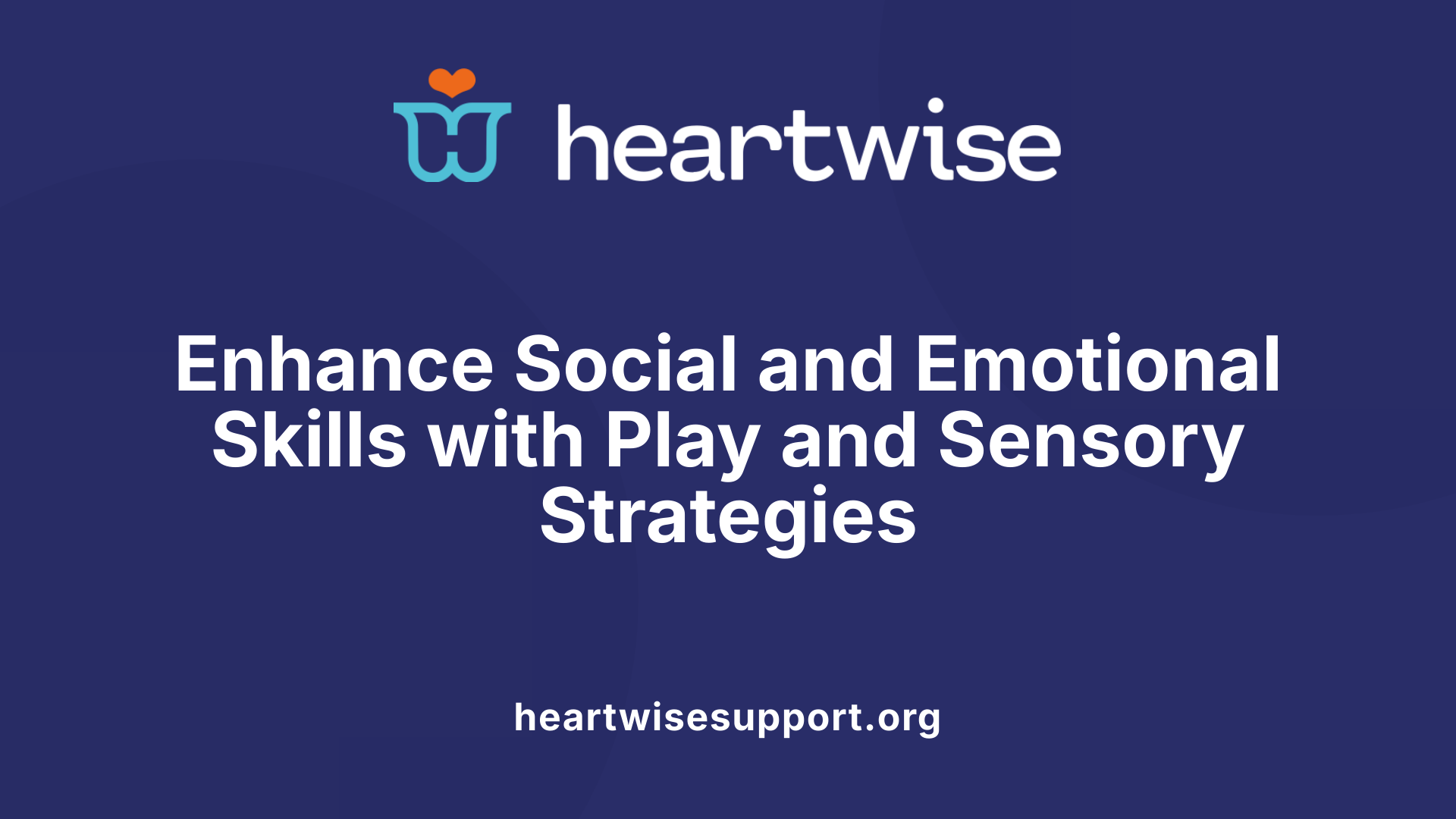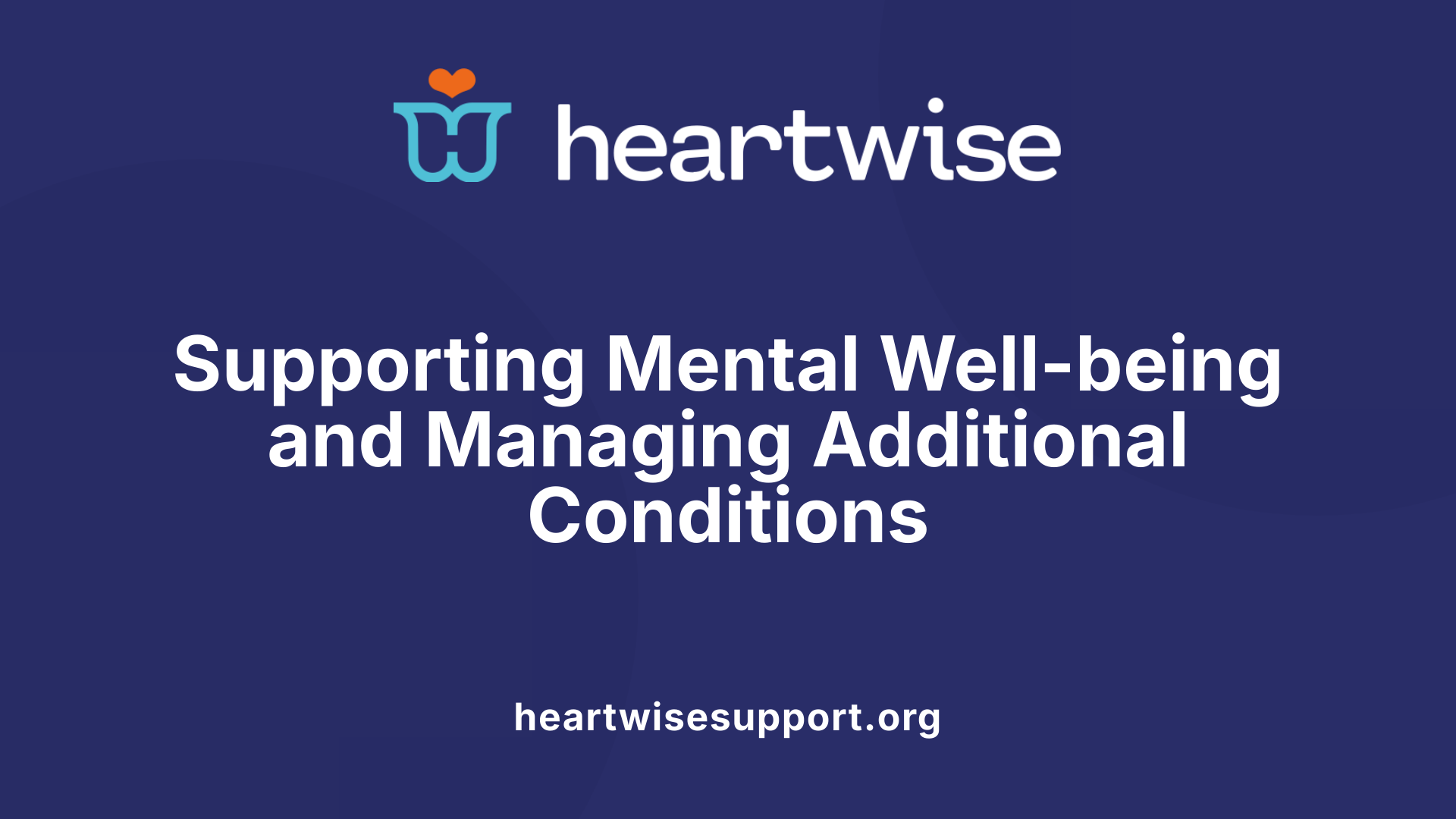Understanding Effective Therapies for Children with Autism
Children with autism spectrum disorder (ASD) benefit from a diverse array of therapeutic approaches tailored to their unique developmental and behavioral needs. This comprehensive overview explores the main therapy models, specific techniques, the role of educational and social strategies, assessment methods, and guidance for caregivers and clinicians. Emphasizing evidence-based practices ensures interventions promote dignity, safety, and autonomy, facilitating growth, learning, and well-being in children with ASD.
Main Therapy Approaches for Children with Autism

What are the main therapy approaches for children with autism?
Children with autism benefit from a diverse array of therapy approaches, each tailored to support specific developmental needs. Behavioral therapies such as Applied Behavior Analysis (ABA) are among the most extensively supported by research. ABA utilizes positive reinforcement techniques to develop socially significant behaviors, including communication, social skills, and daily living skills.
Developmental models focus on fostering overall growth in areas like language and social interaction. The Early Start Denver Model (ESDM) exemplifies this approach, targeting very young children between 12 and 48 months. ESDM incorporates play, routines, and natural interactions within familiar environments to promote developmental gains.
Educational strategies such as TEACCH organize learning through structured routines, visual supports, and tailored classroom environments to enhance understanding and participation. These methods create predictable settings that facilitate learning and reduce anxiety.
Social-relational treatments emphasize improving interactions, emotional bonds, and social understanding. DIR/Floor Time™ encourages children to reconnect with caregivers and develop sequential social and emotional skills through play-based, relationship-centered activities. Similarly, the Relationship Development Intervention (RDI) focuses on helping children form bonds and adapt to changes, often with parents acting as primary therapists.
Supportive therapies also play a vital role. Speech-language therapy addresses communication challenges through exercises in speech production, comprehension, and alternative communication methods such as sign language or picture symbols. Occupational therapy enhances everyday skills like dressing, eating, and motor coordination, often integrating sensory integration techniques to manage sensory sensitivities. Physical therapy contributes to movement, balance, and coordination.
Psychological interventions like cognitive-behavior therapy (CBT) are effective for managing co-occurring mental health conditions, including anxiety and depression. CBT helps children understand and modify unhelpful thought patterns, improving emotional regulation and reducing anxiety.
While no single approach is considered superior, combining these therapies based on individual needs often yields the best outcomes. Personalized treatment plans, developed with professionals’ guidance, aim to support children’s growth and enhance quality of life.
What are some common autism therapy techniques and their benefits?
Among the most practiced methods is Applied Behavioral Analysis (ABA), which breaks down complex skills into manageable steps and uses reinforcement to encourage learning. Techniques within ABA include Discrete Trial Training (DTT), which systematically teaches specific skills one step at a time, and Pivotal Response Treatment (PRT), which focuses on increasing motivation and social initiation.
The Early Start Denver Model (ESDM) is another significant technique combining behavioral principles with naturalistic play, primarily for children under four years old. It aims to promote language, social, and developmental skills early in life.
Social stories and visual supports are also common, designed to prepare children for various situations and reduce anxiety by explaining expectations visually or through narratives.
The benefits of these techniques are well documented. They include improved communication skills, better social interaction, decreased problematic behaviors, and increased independence. These therapies are often intensive, requiring many hours per week, but the investment supports meaningful developmental progress.
Overall, these methods are supported by a substantial body of scientific research, making them foundational options in autism treatment strategies. Their adaptability allows professionals and families to customize interventions, helping children reach their full potential.
Supportive Therapies and Interventions to Aid Development

What types of therapies and interventions are used to support children with autism?
Support for children with autism encompasses a wide range of therapies tailored to individual needs. Behavioral interventions like Applied Behavior Analysis (ABA) are among the most well-established, focusing on using positive reinforcement to develop social skills, improve communication, and promote adaptive behaviors. Pivotal Response Treatment (PRT) is a play-based approach within ABA that centers on motivating children to initiate interactions and respond to cues, leading to broad improvements.
Speech-language therapy is vital for enhancing both verbal and non-verbal communication skills. It utilizes techniques such as augmentative and alternative communication (AAC) systems, social language exercises, and gesture training. Occupational therapy targets sensory processing issues and helps children develop independence in daily routines, including dressing, eating, and grooming. Physical therapy may be used alongside to improve motor skills, coordination, and overall movement.
Educational strategies like the TEACCH program are designed to support visual learning and routine-based instruction, creating structured classrooms that foster understanding and predictability. Early intensive interventions, such as the Early Start Denver Model (ESDM), integrate developmental, behavioral, and relationship-based approaches to promote social, emotional, and cognitive growth.
Social skills training, often involving role-playing and modeling, aims to facilitate better interpersonal interactions. Parent-mediated therapies and behavioral coaching underscore the importance of caregiver involvement in therapy, helping embed strategies into daily life. For children with comorbid conditions like anxiety or ADHD, medications or mental health interventions like cognitive-behavioral therapy (CBT) can effectively manage symptoms.
Overall, these interventions are delivered through individualized, evidence-based plans, emphasizing a collaborative approach among families, clinicians, and educators to optimize each child's development.
How can parents and clinicians learn about autism treatment options?
To navigate the diverse array of autism therapies, parents and clinicians should seek guidance from reputable resources and professional experts. Consulting healthcare specialists such as developmental pediatricians, speech-language pathologists, occupational therapists, and behavioral analysts provides personalized advice tailored to each child's profile.
Educational programs offered by organizations like the American Academy of Child and Adolescent Psychiatry or the National Institute for Health and Care Excellence (NICE) serve as valuable sources of evidence-based information. Attending workshops, parent support groups, and school meetings fosters a community-based understanding of available interventions.
Access to updated research findings, clinical guidelines, and training enhances decision-making. Many families benefit from participating in parent education programs that explain intervention options, including ABA, speech therapy, social skills development, and sensory integration techniques. Collaboration with multidisciplinary teams ensures treatment plans are comprehensive and aligned with the child's evolving needs.
Staying informed about emerging therapies and best practices empowers families and clinicians to make proactive and evidence-supported choices, ultimately supporting the child's growth and quality of life.
| Therapy Type | Primary Focus | Delivery Method | Evidence Base |
|---|---|---|---|
| Applied Behavior Analysis (ABA) | Social, communication, and behavioral skill development | One-on-one, systematic reinforcement | Strong, extensively supported |
| Pivotal Response Treatment (PRT) | Motivation, initiation, social engagement | Play-based, naturalistic | Growing evidence, effective in early intervention |
| Speech-language therapy | Communication skills, language development | Individual or group sessions | Well-established |
| Occupational therapy | Sensory processing, daily living skills | Customized activities | Evidence-based |
| TEACCH | Visual supports, routines, and structured teaching | Classroom modifications | Supported by research |
| Early Start Denver Model (ESDM) | Developmental progress in social, language, cognitive areas | Therapist and parent-coordinated | Empirically supported |
| Social skills training | Interpersonal skills, social interaction | Group or role-play activities | Supported, especially in early stages |
| Parent-mediated interventions | Embedding therapy into daily routines | Training and coaching | Evidence suggests increased benefits |
Support for co-occurring conditions like anxiety and ADHD
Children with autism often experience additional medical and mental health challenges, including anxiety, seizures, sleep disturbances, and ADHD. Managing these conditions can significantly improve overall functioning and quality of life.
Medications may be prescribed carefully to address symptoms like hyperactivity, aggression, or sleep issues, but they do not treat autism itself. For anxiety and mood disorders, psychological therapies such as cognitive-behavioral therapy (CBT) are effective, especially for higher-functioning children. CBT helps children understand and alter distressing thoughts and behaviors, reducing anxiety.
Furthermore, comprehensive treatment plans consider medical, behavioral, and environmental factors, emphasizing the importance of professional guidance. Regular monitoring ensures that interventions are tailored and adjusted based on the child's progress.
Individualized, evidence-based treatment plans
Every child with autism has unique strengths and challenges. Personalized, evidence-based intervention strategies are crucial for meaningful progress. These plans integrate behavioral, developmental, educational, social, and medical approaches.
Behavioral techniques like ABA are often combined with speech, occupational, and physical therapies to support comprehensive development. For children with additional health conditions, specific medical treatments are incorporated into the broader plan.
Collaboration among families, medical professionals, educators, and therapists ensures that interventions are consistent, goal-oriented, and flexible to adapt as the child grows.
This person-centered approach honors the child's individual needs, promoting autonomy, dignity, and maximal potential.
Assessment and Diagnosis of Autism Spectrum Disorder

What assessment and diagnosis methods are used in autism spectrum disorder?
Diagnosing autism spectrum disorder (ASD) involves a comprehensive process combining behavioral evaluations, standardized screening tools, caregiver input, and developmental assessments. Experts such as psychologists, pediatric neurologists, and developmental pediatricians play a crucial role in this process.
Behavioral evaluations are central, focusing on observing behaviors that align with criteria outlined in the DSM-5, which emphasizes deficits in social communication and the presence of restricted and repetitive behaviors.
Standardized screening instruments like the Modified Checklist for Autism in Toddlers (M-CHAT) and the Vanderbilt assessment scale are commonly used during routine pediatric checkups to identify early signs. These tools help flag children who may need further assessment.
Caregiver reports provide vital insights into a child's behavior across different environments and routines, supplementing clinical observations. Developmental assessments gauge milestones related to language, motor skills, and social interactions.
Early detection is emphasized during routine screenings between 6 and 18 months, making timely diagnosis possible for initiating interventions. Since there are no definitive biological tests such as blood tests or brain scans for ASD, diagnosis relies heavily on behavioral patterns.
Once diagnosed, a personalized intervention plan is tailored to the child's specific needs. This often includes therapies like applied behavior analysis (ABA), speech therapy, occupational therapy, and support for co-occurring conditions. Early and accurate diagnosis enhances developmental outcomes and quality of life.
What are evidence-based mental health techniques for children with autism?
Effective mental health strategies for children with autism include various behavioral, developmental, and psychological approaches. Applied Behavior Analysis (ABA) is widely regarded as the gold standard, using positive reinforcement to teach social and communication skills while reducing problematic behaviors.
Developmental therapies such as speech and language therapy and the Early Start Denver Model (ESDM) focus on improving communication, social interaction, and cognitive skills from a young age. These approaches integrate teaching into daily activities, promoting generalization and meaningful learning.
Psychological therapies like cognitive-behavior therapy (CBT) are especially beneficial in managing co-occurring anxiety, depression, or emotional regulation issues. CBT helps children identify and modify distressing thoughts and behaviors, providing tools to cope with everyday stressors.
Social skills training and the use of augmentative and alternative communication (AAC) systems, including picture exchange communication systems (PECS), facilitate social engagement and language initiation.
Early diagnosis combined with a multidisciplinary, individualized treatment plan is vital. Addressing co-occurring mental health conditions through appropriate screening, like the PROMIS Autism Battery for anxiety or the Vanderbilt scale for ADHD, ensures comprehensive support.
Together, these evidence-based techniques aim to improve communication, reduce anxiety, foster independence, and maximize the child's potential, contributing to better long-term outcomes.
Play Therapy and Sensory Strategies for Emotional and Social Development

How does play therapy promote social, emotional, and communication skills in children with autism?
Play therapy is a vital approach that encourages children with autism to engage in play activities they find interesting and comfortable. Using toys, activities, and structured play routines, this therapy helps children express their feelings and thoughts in ways that feel natural to them. It often transforms challenging behaviors into more constructive, expressive behaviors that are less harmful.
Play therapy specifically targets core difficulties in social skills, such as initiating interactions, sharing attention, and understanding others’ emotions. It also addresses communication impairments, including symbolic or pretend play, which are crucial for social learning. Through play, children learn to imitate, model interactions, and develop language skills, all within safe and supportive environments.
Different techniques like child-centered play therapy, Floortime, and peer-mediated play interventions are often tailored to each child's developmental level. These approaches foster emotional regulation, help children build trust in social relationships, and promote overall development. The process creates opportunities for children to explore social cues, practice new behaviors, and stabilize their emotional responses, leading to better social and emotional well-being.
What types of play therapy suit children with autism?
Children with autism benefit from various play therapy modalities designed to meet their individual needs. Child-centered play therapy emphasizes creating a safe space where children can lead the play, promoting autonomy and self-expression. Floortime is a structured play approach that focuses on developing emotional bonds by following the child's interests and gradually guiding them toward more complex play and social behaviors.
Peer-mediated play interventions involve children of similar age interacting, which naturally encourages social skills like cooperation, sharing, and turn-taking. These methods help children develop joint attention, symbolic play, and social initiation skills.
How can play therapy enhance self-expression and emotional regulation?
Engaging children in play allows them to explore and express emotions that they may find difficult to verbalize. Toys, role-playing, and activities serve as mediums for self-expression, providing a safe outlet for feelings like frustration, joy, or fear.
In play therapy, children learn to regulate their emotional responses by participating in predictable routines within a playful context. This stabilization helps reduce tantrums, aggressive behaviors, and anxiety, contributing to improved emotional resilience. Children gain confidence in expressing themselves authentically, which is fundamental for social and emotional development.
How are sensory integration techniques incorporated into play therapy?
Sensory integration is seamlessly woven into play therapy to help children process sensory information more effectively. For example, sensory bins filled with tactile items like beans, rice, or textured toys stimulate touch and help desensitize overstimulated children.
Calming sensory swings and weighted blankets promote relaxation, while obstacle courses with gross motor activities can develop motor skills and sensory processing. Sensory bottles with swirling visuals serve as visual stimuli that can soothe or alert children as needed.
Designated sensory timeout areas provide a safe space for self-regulation if sensory overload occurs. Incorporating yoga, outdoor play, and involving children in decision-making foster independence while promoting calming, regulating sensory experiences.
What are the benefits of multisensory activities such as sensory bins, swings, and obstacle courses?
Multisensory activities stimulate multiple senses simultaneously, which has been shown to improve focus, calmness, and sensory processing. Sensory bins offer tactile exploration, engaging children in meaningful ways that support brain development.
Sensory swings and calming equipment provide physical comfort, helping children manage overstimulation and anxiety. Obstacle courses build gross motor skills, balance, and coordination, while also giving children a sense of achievement and control.
Visual stimuli like sensory bottles can reduce anxiety and facilitate self-soothing. Outdoor playground activities enhance social interaction and motor development within natural environments.
How do these strategies support development of joint attention, symbolic play, and social interaction skills?
Joint attention—the shared focus of two individuals on an object—is foundational for social communication. Sensory and play therapies help children with autism improve this skill by encouraging them to look at or share interests with others.
Symbolic or pretend play develops language and social understanding, and multisensory activities provide rich contexts for this growth. Through guided play, children learn to use objects symbolically, imitate behaviors, and respond to social cues.
By engaging in shared play experiences and sensory activities, children enhance their ability to initiate interactions, understand others’ perspectives, and develop meaningful relationships. These skills are crucial for better social participation and emotional regulation.
| Strategy/Method | Focus Area | Typical Activities |
|---|---|---|
| Play Therapy | Emotional, social, communication skills | Role play, storytelling, imaginative play |
| Floortime | Emotional bonding, complex play | Following child's lead, building on interests |
| Peer-Mediated Play Interventions | Social skills, joint attention | Cooperative games, turn-taking activities |
| Sensory Bins | Sensory input, calming, exploration | Tactile items like rice, beans, textured objects |
| Sensory Swings | Calming, sensory regulation | Gentle swinging, vestibular stimulation |
| Obstacle Courses | Gross motor skills, sensory integration | Climbing, crawling, balancing activities |
| Visual Schedules | Routine understanding, reducing anxiety | Picture cards, sequence charts |
| Yoga and Outdoors Activities | Self-regulation, sensory calming | Guided yoga, outdoor play, nature walks |
| Decision-Making Activities | Independence, executive function | Choosing toys, planning play sequences |
This blend of play therapy and sensory strategies offers comprehensive support for children with autism, nurturing their social, emotional, and communication development in engaging, accessible ways.
Supporting Mental Health and Managing Co-Occurring Conditions

What are evidence-based mental health techniques for children with autism?
Children with autism often require comprehensive, tailored approaches to support their mental health and social-emotional well-being. Evidence-based techniques include behavioral interventions like applied behavior analysis (ABA), which uses positive reinforcement to teach and strengthen socially significant behaviors. For instance, ABA focuses on developing communication skills, social responses, and adaptive behaviors.
Developmental therapies such as speech and language therapy and the Early Start Denver Model (ESDM) are designed to enhance communication, social engagement, and developmental milestones. These approaches help children improve expressive and receptive language, joint attention, and social interaction.
Psychological therapies, particularly cognitive-behavior therapy (CBT), are effective in addressing co-occurring anxiety, depression, and emotional regulation issues, especially in children with higher adaptive functioning. CBT teaches children to identify and modify distressing thoughts and feelings, helping them manage anxiety and other mental health challenges.
To enhance social skills and communication, interventions like social skills training, picture exchange communication systems (PECS), and augmentative and alternative communication (AAC) methods are used. These tools facilitate meaningful social engagement and improve initiation of communication.
Early detection and individualized intervention plans are vital. Multidisciplinary approaches that include family participation, educational strategies, and community resources greatly improve developmental outcomes. Screening for co-occurring mental health conditions ensures timely and appropriate treatment, which improves the child's overall well-being.
Are medications effective in managing ASD symptoms and co-occurring conditions?
Currently, there are no medications that cure the core symptoms of autism spectrum disorder. Instead, medications are primarily used to address specific co-occurring conditions such as anxiety, seizures, sleep disturbances, hyperactivity, and irritability.
Medications like anticonvulsants can control seizure activity, while antidepressants and antipsychotics may be prescribed to manage aggression, severe behavioral challenges, or anxiety. These medications can significantly improve quality of life when combined with behavioral therapies.
It’s important to note that medication responses vary among children, and adjustments are often necessary. Sensory sensitivities and side effects must be carefully monitored by healthcare providers.
Administering these medications requires careful evaluation and oversight to avoid adverse effects. In some cases, lifestyle modifications, behavioral strategies, and environmental adjustments are recommended alongside or instead of medication.
The goal of medication use is to support overall functioning and well-being rather than to treat autism directly. Ongoing assessment helps ensure the approaches remain safe and effective.
Managing Co-occurring Medical and Behavioral Conditions
Children with autism frequently have additional health issues such as sleep problems, gastrointestinal (GI) disorders, and attention deficit hyperactivity disorder (ADHD). Addressing these conditions can lead to improvements in attention, learning, and behavior.
Behavior management strategies, including behavioral modification programs, routine adjustments, and sensory diet plans, are essential. Lifestyle modifications—such as establishing consistent sleep routines and dietary adjustments—support better health outcomes.
Family support systems and counseling play vital roles in helping families navigate the challenges of co-occurring conditions. Support groups provide emotional reassurance, practical tips, and shared experiences.
The Role of Person-Centered Support
Person-centered care emphasizes respecting each individual’s dignity, safety, and autonomy. Interventions are tailored to meet the unique needs and preferences of each person, fostering independence and self-respect.
Practitioners advocate for dignity-driven support plans that involve families in decision-making and respect personal goals. This approach promotes stronger familial bonds and better long-term outcomes.
Resources from Trusted Organizations
Families and caregivers are encouraged to consult trusted sources like the National Institute for Health and Care Excellence (NICE), the NHS, and specialized clinics for guidance on effective interventions. These organizations provide updated, evidence-based recommendations and develop tailored programs to suit individual needs.
Additionally, many clinics and service providers now offer integrated, multidisciplinary approaches that combine behavioral, medical, and supportive therapies.
Integrating Therapy and Support for Optimal Outcomes
Effective management of autism spectrum disorder involves a multidisciplinary, personalized approach that combines evidence-based behavioral therapies, supportive interventions, and mental health strategies. Tailoring treatments to each child's strengths and needs, while involving families and caregivers, maximizes developmental progress, emotional well-being, and social integration. Continued research and collaboration among clinicians, educators, and families are vital to advancing therapeutic techniques and ensuring children with autism can lead fulfilling lives built on understanding, respect, and support.
References
- Treatment and Intervention for Autism Spectrum Disorder - CDC
- Intervention and Therapies | Autism Society
- Play therapy in children with autism: Its role, implications, and ...
- Types of Therapy for Autism: 5 Options for Autistic Kids | USAHS
- Tips for Managing Mental Health Disorders in Children with Autism
- Behavioral Therapy for Autism Spectrum Disorder in Children
- Autism spectrum disorder - Diagnosis and treatment - Mayo Clinic
- Autism Treatments, Interventions, and Therapy Options











